The Islanders have returned Kevin Poulin to the AHL to get some game action, so Nilsson has been recalled and could start on Sunday after going 7-1-0 in his last eight starts with the Sound Tigers.
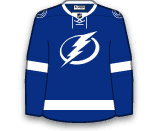
The Islanders have returned Kevin Poulin to the AHL to get some game action, so Nilsson has been recalled and could start on Sunday after going 7-1-0 in his last eight starts with the Sound Tigers.

Poulin has not started since January 27, so the Islanders have returned him to Bridgeport to get some starts.
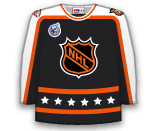
Heeter will serve as Steve Mason's backup with Ray Emery sidelined with a lower-body injury.

Hammond stopped all 11 shots that he faced after relieving Robin Lehner in the Senators 6-1 loss to the Red Wings. It was Hammond's NHL debut, but he will return to the AHL where he is 17-12-3 with a 3.02 GAA and .903 SV%.
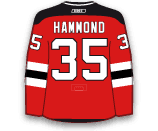
Brouillette did not play in Thursday's game and has been sent back the Hershey. His return suggests that Jack Hillen (leg) could be ready to be activated from injured reserve.

Curry has been recalled as insurance incase the banged up Niklas Backstrom is unable to dress on Thursday. Curry is 7-5-2 with 2.08 GAA and .935 SV% with Iowa this season.

Brouillette has one goal and one assist in two games with the Capitals this season. While with Hershey he has nine goals and eight assists (17 points) in 36 games.

Rinne has been sidelined since October with a bacterial infection following surgery to his hip. His assignment is a great sign that he is close to a return. He will likely start one or two games with Milwaukee to get him back into game shape at which point he will be recalled and presumably retain his job as the Predators starter.
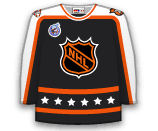
Carey Price is out for the next two games with a lower-body injury, so Tokarski has been recalled to serve as Peter Budaj's backup tonight vs. Detroit and could potentially draw the start tomorrow in Pittsburgh. Tokarski is 17-13-2 with a 2.34 GAA and .919 SV% in 34 games with the Hamilton Bulldogs this season.

Deschamps, 24, has likely been recalled as insurance for Marcus Johansson, who has had VISA/Passport issues in his return from Sochi, Russia. Deschamps has 13 goals and 16 assists (29 points) in 47 games with Hershey. He has never dressed for an NHL game.
Vatanen, who played very well for Finland in Sochi, has been returned to the AHL suggesting that Mark Fistric will be good to go on Friday vs. St. Louis. His return to the AHL is not a knock on his skill level, but he is a victim of a numbers game. If the Ducks are dealt another injury on the blueline, expect Vatanen to be the first one recalled.
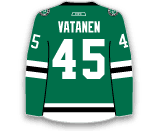
Kearns has recorded three goals, one assist and six penalty minutes in 22 games this season with San Jose. At the time of his recall (Dec. 28), he led Worcester in points (18) and assists (13) and currently ranks sixth on the team in scoring.

With Jakub Kindl (knee) out for the next two games, Sproul has been recalled to serve as the Red Wings extra defenseman. He has registered eight goals and 16 assists (24 points) in 53 games with Grand Rapids this season.
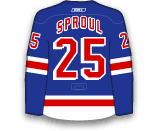
Hillen, 28, played in two games with the Capitals this season before suffering a right tibial plateau fracture on October 3 against Calgary. Hillen has missed Washington’s last 57 games due to the injury. Hillen recorded nine points (three goals, six assists) and 14 penalty minutes in 23 games with the Capitals last season.
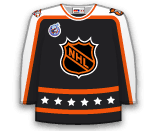
They need him as an insurance policy because backup netminder Anders Lindback hasn’t been cleared to play after sustaining an ankle injury. Gudlevskis would likely serve as Ben Bishop's back-up, but his unreal 55 save performance vs. Team Canada in Sochi, shows he can handle the NHL.

Lain is not fantasy relevant.
Jaskin has skated in seven games with the Blues this season, he has one goal and one assist in those contests. While in the AHL he has 28 points (14G / 14A) in 39 games. Jaskin was the Blues second round pick (41st overall) in the 2011 NHL draft.

McMillan has 11 goals and 16 assists in 46 games with Portland this season. He has yet to suit up in a game with the Coyotes but has tallied 11 goals and 15 assists in 91 career NHL games with the Anaheim Ducks.

Gelinas, 22, played five games for the Albany (0G / 2A / +3) since he was sent down January 31. He had to sit out four AHL games earlier in the month as he was ineligible to play during the NHL’s Olympic break because he spent too much time on New Jersey’s roster. On the season, Gelinas has six goals and 16 assists (22 points in 44 games with New Jersey.

Moser, 24, has appeared in his first three NHL contests with the Predators this season, recording an assist while averaging 11:06 of ice time. He’s also posted 25 points (8G / 17A) in 42 games with the Admirals during his first North American professional season. The Bern, Switzerland native recently returned from the 2014 Olympics, where he scored the game-winning goal in the Swiss’ 1-0 victory over Latvia, and appeared in all four of the nation’s games.